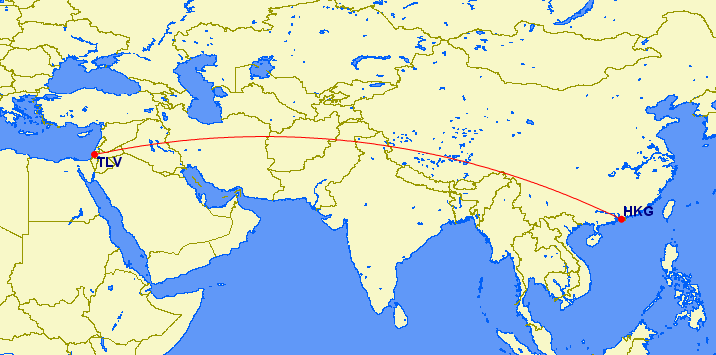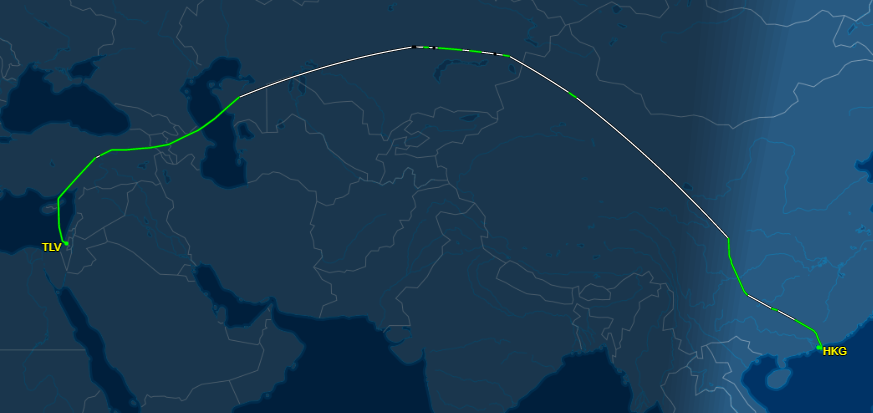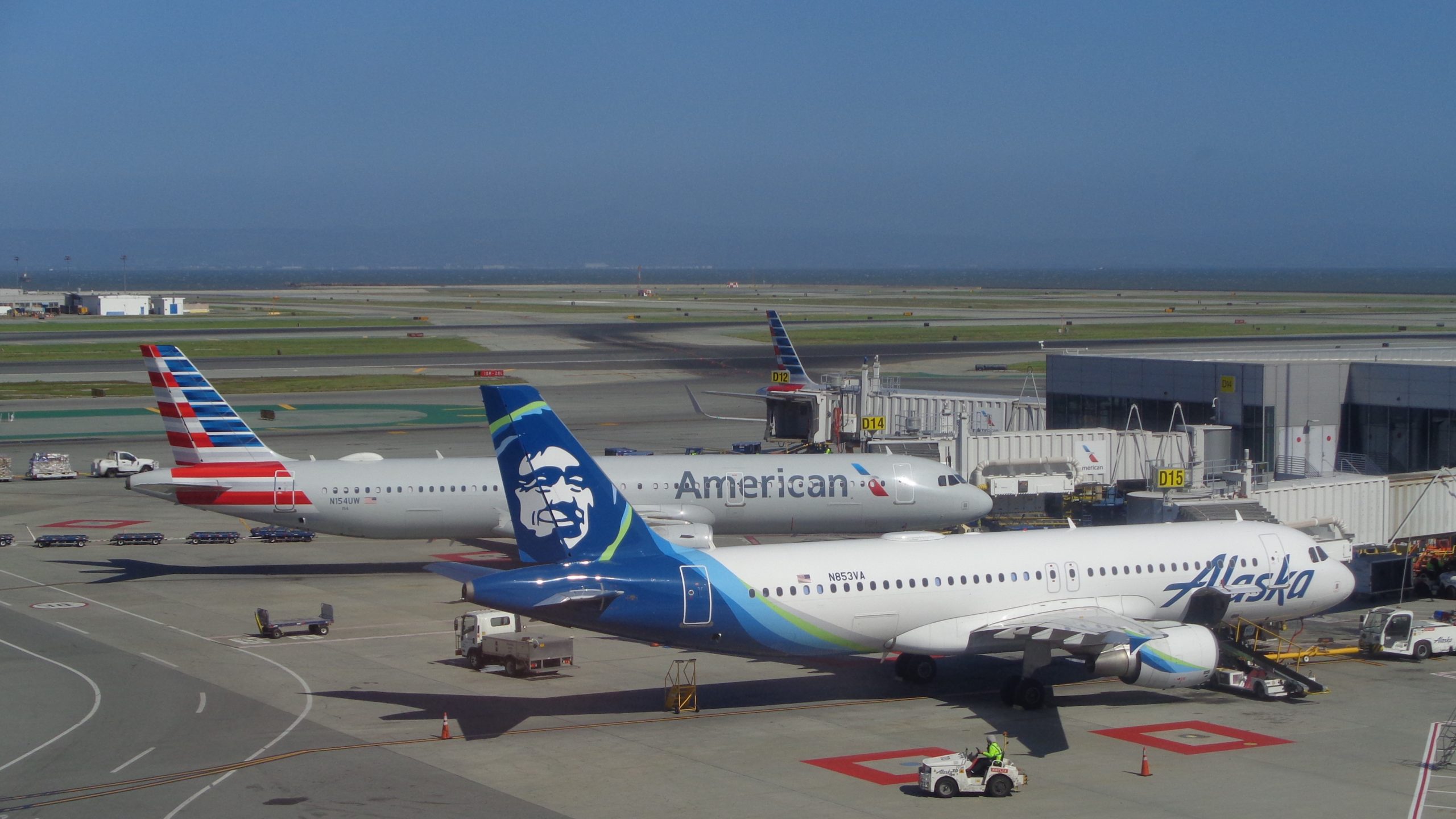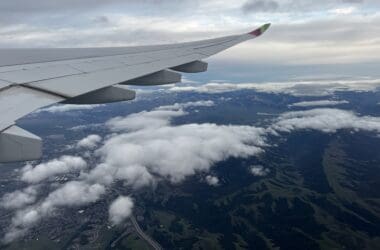Whenever you fly, you generally expect that the flight path will follow somewhat closely to the shortest path between the two airports. There are obvious and necessary deviations of course, including required takeoff and landing paths and adjustments to avoid weather. But you’d generally expect that the flight wouldn’t depart that much from the great circle route.
Well, there are some that do. And this Cathay Pacific flight is one of the more interesting I’ve seen.
Cathay Pacific’s Odd Flight Path from Hong Kong to Tel Aviv
I thought is quite interesting when Cathay Pacific launched service to Tel Aviv a few years back. It was one of those routes that I didn’t really expect would hang around long. It only really stuck around in my mind as one of the better options to be had on the Alaska Mileage Plan award chart for business and first class, albeit the long route to Israel from the U.S.
Remarkably, the route has been quite the success. El Al and Cathay Pacific both operate the route nonstop on a daily (or near daily) basis, and passenger numbers between the two cities has more than doubled in just a few years. The route’s success isn’t the odd part though.
What’s odd is how long the flight is. While planning out a potential itinerary from San Francisco to Israel on Cathay, I was a bit puzzled why the flight from Hong Kong to Tel Aviv has a block time of 11:55. Given that the great circle distance is under 5,000 miles, this seems way too long. A comparable trek is Houston to London nonstop on British Airways, which is blocked for 3 fewer hours! So what is the deal with HKG-TLV?
The Mystery Revealed
My review of Great Circle Mapper revealed the likely reason. Look at the countries that the most direct route passes through. India, Pakistan, Afghanistan, Iran, and Iraq are all right along the great circle path.

My best guess was that Cathay Pacific is unwilling to fly through Iranian or Iraqi airspace, as well as possibly other nearby countries. They’d either have to cut north or south to avoid these. But would they really add three whole hours in the process? Heading over to Flight Aware, I pulled up the history for CX675.

Wow. This definitely avoids the countries in question, but it is a much larger “diversion” from the great circle route than I ever would have expected. However, this flight path does mean that Cathay Pacific’s flights to Tel Aviv stay within only Chinese, Kazakh, Azerbaijani, Armenian, and Turkish airspace before entering Israeli territory. That’s 2-3 fewer countries, not to mention the most problematic ones of Iran and Iraq. I should have also thought of Tibet, which I belatedly realized is avoided because of its extremely high average elevation.
Conclusion
While this routing makes enough sense once you look into it, Cathay is still burning quite a bit extra fuel for their flights to Israel. What would normally be a trek of around 9 hours is extended to nearly 12 with the chosen path. El Al does something similar, although not as drastic, passing over Turkmenistan, Uzbekistan, and Kyrgyzstan on their flights to Hong Kong.
I know there are other odd flight routings out there, including Air India’s flights over the Pacific that is the longest in the world by actual flown route. Rather than heading over the pole, the route took advantage of strong tailwinds that meant the flight burned less fuel, even though the total flown distance was substantially longer.
What other interesting flight routes are you aware of?













Check out any flights from Taiwanese airlines to Europe.
I know EVA flies from BKK on a couple routes. That need to avoid Chinese airspace is quite problematic!
Geopolitic is only reason. Some countries ban overflying from/to Israel.
I know nearly the entire Middle East doesn’t fly to Israel. And I can imagine the overflight is the same, although the risk flying above Iraq/Iran has to be elevated as well.
I believe that most countries in the Middle East do not give permission for any airlines flight to Israel to pass over their airspace. It is why Air Indias flight to Tel Aviv last year was in the news as it was the only flight for which Saudi Arabia gave overflight rights.
Interesting. I knew many don’t fly to Israel, period, but to deny overflight to *non* Israeli airlines seems another level of petty.
I am sure that geopolitics plays a part here, but so does geography. The Great Circle route passes directly over the Himalayas which is obviously a no-no from a flight safety perspective.
Agreed. And I noted that. It’s the ceiling of the world.
I am sure that geopolitics is part of it, but a lot of it is straightforward geography. The Great Circle route passes almost directly over the Himalayas and that is a no-no from a flight safety perspective. If you look at Flight Aware routings from HKG to Western Europe you will see the track out of Hong Kong generally exhibits the same pattern
El Al has to fly that route because they cant over fly those countries. My thought was Israel granted permission on the condition they fly the same path so Cathay doesn’t have an advantage.
That would be an interesting requirement. In any case, the flown route by both Cathay and El Al are similar, although the countries passed over are *slightly* different.